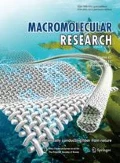Abstract
Fibers of long-fiber-reinforced thermoplastic (LFT) pellets are longer than those of short-fiber-reinforced thermoplastic (SFT) pellets produced by extrusion. To overcome the fiber length limitations of the SFT pellets, LFT pellets were prepared by a pultrusion process using continuous fibers, which afforded longer fibers. Currently, long glass-fiber-reinforced polypropylene (LGF-PP) materials, which are one of the growing markets of the plastics industry, are typically used, particularly for applications in the automotive industry where lightweight performance and cost savings are required. The LFT pellets are primarily converted into the final product by injection molding. During the injection molding process, the LFT pellets are broken and the fiber length decreases as a consequence. In this study, glass and carbon-fiber-reinforced polypropylene of various pellet lengths (3-16 mm) were prepared by impregnating pultrusion process to evaluate the effect of mechanical properties according to fiber length. The length of the residual fibers recorded after injection molding were observed to decrease in proportion to the pellet length. Even with LFTs having the same material composition, the mechanical properties was different after injection molding according to the residual fiber length. In this injection molded LFT, the flexural modulus was higher as the residual fiber length was shorter. The impact strength was larger in samples without adhesive resin and the observed differences were larger for longer fiber lengths. From these results, the mechanical properties of LFT can be improved by understanding the properties of long fibers.

Similar content being viewed by others
Reference
K. Friedrich and A. A. Almajid, Appl. Compos. Mater., 20, 107 (2013).
T. Ishikawa, K. Amaoka, Y. Masubuchi, T. Yamamoto, A. Yamanaka, M. Arai, and J. Takahashi, Compos. Sci. Technol, 155, 221 (2018).
J. L. Thomason, Composites, 33, 1641 (2002).
J. L. Thomason and M. A. Vlug, Composites, 28A, 277 (1997).
R. Wongpajana, S. Mathurosemontria, R. Takematsua, H. Y. Xua, P. Uawongsuwanb, S. Thumsorna, and H. Hamada, Energy Procedia., 89, 328 (2016).
J. S. Kim and D. H. Kim, J. Thermoplastic Compos. Mater, 58, 1599 (2015).
N. Hirano, H. Muramatsu, and T. Inoue, Adv. Compos. Mater, 23, 151 (2013).
S. Yao, F. Jin, K. Y. Rhee, D. Hui, and S. Park, Compos. Part B: Eng., 142, 241 (2018).
M. Rohde, A. Ebel, F. Wolff-Fabris, and V. Altstadt, Int Polym. Proc., 26, 292 (2011).
J. H. Phelps, A. I. Abd El-Rahman, V. Kunc, and C. L. Tucker HI, Compos Part A: Appl Sci. Manuf, 51, 11 (2013).
J. L. Thomason, Compos. Part A: Appl. Sci. Manuf., 36, 995 (2005).
V. Rizov, T. H., A. Reinhardt, and K. Friedrich, Polym. Polym. Compos, 13, 121 (2005).
H. Tseng, R. Chang, and C. Hsu, Compos. Sci. Technol, 144, 51 (2017).
M. Rohde, A. Ebel, F. Wolff-Fabris, and V. Altstadt, Int Polym. Proc, 26, 292 (2011).
R. Giusti, F. Zanini, and G. Lucchetta, Composites Part A, 112, 263 (2018).
G. Meneghetti, M. Ricotta, G. Lucchetta, and S. Carmignato, Composites Part B, 65, 17 (2014).
J. Wang, C. Geng, F. Luo, Y. Liu, K. Wang, Q. Fu, and B. He, Mater. Sci. Eng. A, 528, 3169 (2011).
D. Masato, J. Rathore, M. Sorgato, S. Carmignato, and G. Lucchetta, Mater. Des, 132, 496 (2017).
R. von Turkovich and L. Erwin, Polym. Eng. Sci., 23, 743 (1983).
A. Inoue, K. M. Tanaka, and T. Y. Arao, Y. Sawada, J. Compos. Mater, 49, 75 (2015).
A. Kelly and W. R. Tyson, J. Mech. Phys. Solids, 13, 329 (1965).
D. Veazey, T. Hsu, and E. D. Gomez, J. Appl. Polym. Sci, 134, 44441 (2017).
M. Xia, H. Hamada, and Z. Maekawa, Intern. Polym. Processing, 10, 74 (1995).
Author information
Authors and Affiliations
Corresponding author
Additional information
Publisher’s Note Springer Nature remains neutral with regard to jurisdictional claims in published maps and institutional affiliations.
Acknowledgment: The authors would like to thank LOTTE CHEMICAL Research Institute for supporting the test and preparing the LFT samples.
Rights and permissions
About this article
Cite this article
Kim, Y., Park, O.O. Effect of Fiber Length on Mechanical Properties of Injection Molded Long-Fiber-Reinforced Thermoplastics. Macromol. Res. 28, 433–444 (2020). https://doi.org/10.1007/s13233-020-8056-6
Received:
Revised:
Accepted:
Published:
Issue Date:
DOI: https://doi.org/10.1007/s13233-020-8056-6




